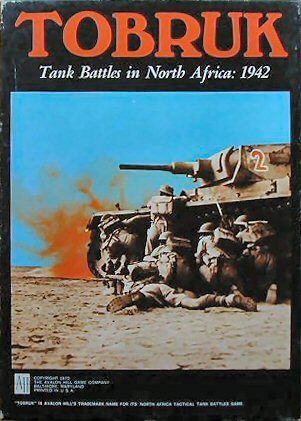Tobruk: Tank Battles in North Africa 1942 (1975) Board Game
Tobruk: Tank Battles in North Africa 1942 is a classic wargame that was first released in in 1975. Designed by Randall C. Reed and published by The Avalon Hill Game Co, this game puts players in the midst of tank battles during World War II in North Africa. With a focus on strategy and simulation, Tobruk offers a deep and engaging gameplay experience for 2 players.
Game Components of Tobruk: Tank Battles in North Africa 1942
How To Setup Tobruk: Tank Battles in North Africa 1942
Setting up the game involves laying out the hex grid maps according to the chosen scenario, distributing the counters to each player based on their forces, and preparing the necessary charts and player aids. Players will also need to familiarize themselves with the rulebook, especially if they are new to the game. The game introduces rules gradually through nine scenarios, starting with basic rules and adding complexity as players progress.
Gameplay Mechanics and Game Objective
Player Experience
Playing **Tobruk** is a detailed and immersive experience, particularly for those interested in historical wargaming. The game requires a significant amount of bookkeeping and familiarity with historical nomenclature, which can be both engaging and challenging. Players appreciate the open desert terrain, which allows for a lot of freedom in movement and strategy. However, the intricate artillery penetration tables and numerous die rolls can make the game tedious for some.
Pros
Cons
Personal Thoughts on Tobruk: Tank Battles in North Africa 1942
**Tobruk** is ideal for experienced wargamers and history enthusiasts who appreciate detailed tactical combat and historical accuracy. It is not a game for casual players or those looking for quick, exciting matches. The game’s complexity and the need for patience make it more suitable for players who are willing to invest time in learning and mastering its mechanics. Despite its initial lack of success, **Tobruk** has maintained a niche following and is remembered for its innovative gameplay mechanics and historical detail.
We are supported by our audience. When you purchase through links on our site, we may earn an affiliate commission, at no extra cost for you. Learn more.

